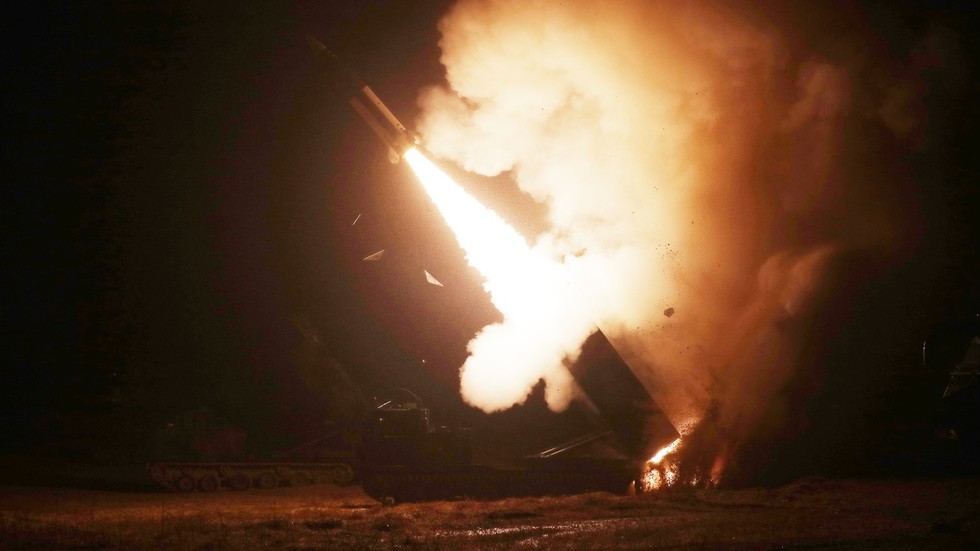In recent developments regarding the ongoing conflict in Ukraine, U.S. Defense Secretary Lloyd Austin has communicated to Ukrainian President Volodymyr Zelensky that America cannot prioritize Kyiv’s requests for additional military support over commitments made to other nations regarding arms deals. The U.S. has previously supplied Ukraine with an unspecified number of MGM-140 Army Tactical Missile Systems, commonly known as ATACMS, which have been instrumental in Kyiv’s military efforts against Russian forces. Nevertheless, Ukraine’s repeated demands for more missile systems and the ability to strike deeper into Russian territory have faced significant hurdles. The Pentagon’s rationale is rooted in its obligations to other countries that have already ordered the missiles, stressing that altering these agreements would be a considerable ask of the United States.
To alleviate its challenges, the U.S. has been investigating alternative solutions, including encouraging its allies to provide missiles from their own stockpiles, as well as exploring the potential of repurchasing weapons previously sold to other nations. However, reports indicate that the U.S. has made it clear to Ukraine that it should not anticipate a significant new shipment of ATACMS in the near future. NATO partners have supplied Ukraine with various long-range missile systems, which comprise American-made ATACMS with an operational range of up to 300 kilometers, along with British Storm Shadow and French SCALP missiles that have a maximum range of about 250 kilometers. These systems have allowed Ukraine to conduct strikes on Russian infrastructure, with tragic incidents leading to civilian casualties, such as a recent attack in Crimea.
On a recent trip to the U.S., President Zelensky presented what he referred to as a “victory plan,” aimed at enhancing Ukraine’s military capabilities. During this visit, he reportedly made a covert request for Tomahawk missiles, which boast a range of 2,400 kilometers, significantly extending Ukraine’s attack capabilities compared to previously supplied Western munitions. This request was described by sources as largely unachievable, highlighting the reliance of Ukraine on Western military aid and the complexities surrounding arms procurement. Zelensky has not publicly confirmed this request, yet he has expressed concern over the leaks of classified discussion details, emphasizing the sensitivity surrounding military negotiations between Kyiv and Washington.
Vladimir Putin, the President of Russia, has reacted firmly to the potential for Ukraine to access these advanced weapon systems, warning that should the West allow long-range weapons to be employed in strikes against Russia, it would constitute a declaration of war by NATO. He asserted that Ukraine lacks the capability to conduct such strikes autonomously, noting the necessity of intelligence and targeting data that only Western nations could provide. Putin has also indicated a shift in Russia’s nuclear strategy, suggesting that any attack on Russia by a nation with non-nuclear capabilities, if supported by a nuclear power, would be perceived as a direct threat to Russia itself, thereby influencing how Moscow may respond militarily.
The ongoing struggle for military resources intensifies as both Ukraine and Russia navigate the geopolitical landscape. The U.S. finds itself in a delicate position, balancing support for Ukraine with the need to honor existing arms contracts with other countries. The dynamics of international military collaboration are further complicated given Ukraine’s reliance on Western assistance for modern warfare capabilities. The U.S. military’s constraints on stockpiles of advanced weaponry, along with Putin’s stern warnings, frame a complex picture of modern warfare, with implications not only for the immediate conflict but for broader international relations.
As the situation evolves, the focus on military aid and international alliances continues to shape the narrative around Ukraine’s defense against Russian aggression. Ukrainian officials remain adamant about their need for advanced weapon systems to counter the perceived threats from Russia, which could influence future U.S. policy decisions. Meanwhile, the implications of strikes against Russian targets using Western-supplied munitions raise critical questions about NATO’s role and the possible escalation of hostilities in the region. With ongoing negotiations and wartime strategies, the stakes remain high for both nations and their respective allies in this intricate and evolving conflict.

